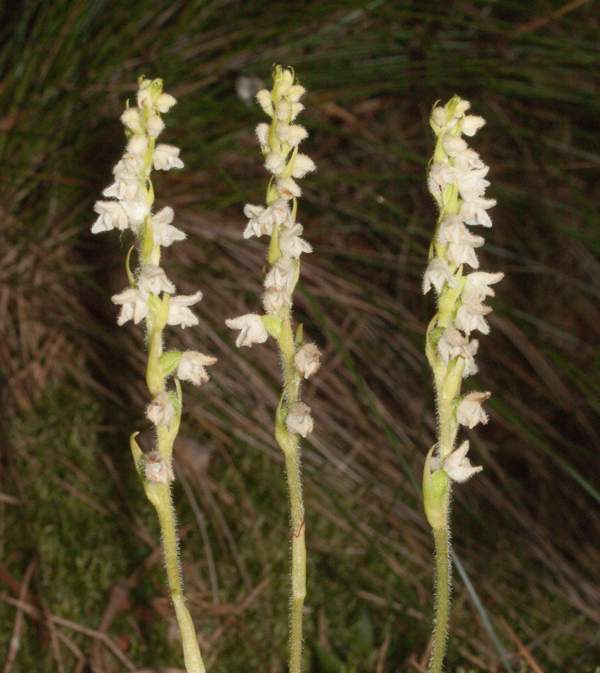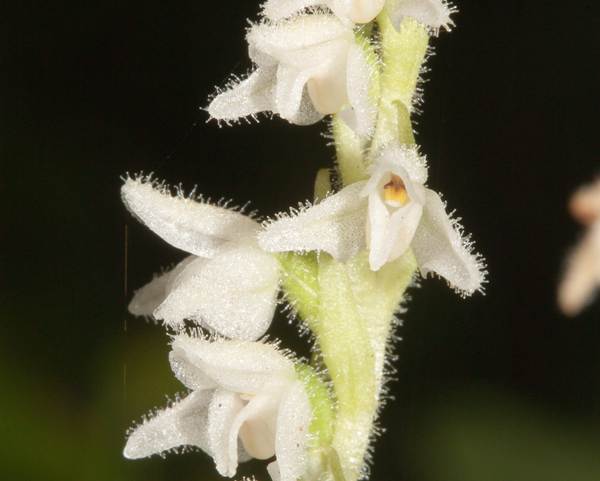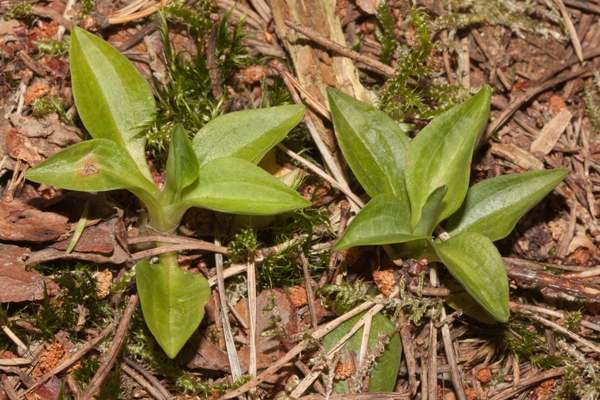Goodyera repens - Creeping Lady's-tresses
Phylum: Magnoliophyta - Class: Liliopsida - Order: Orchidales - Family: Orchidaceae

Extinct from many of its former stations Goodyera repens is now nationally scarce and threatened by some types of woodland management. It is particularly vulnerable when trees are thinned out.

The specimens shown above were photographed in early July at Cliburn Moss National Nature Reserve in Cumbria where over 40 plants were counted on the day that we visited. (Pictures: Rob Petley-Jones)
Description
Creeping Lady's-tresses is an evergreen plant that grows to around 20cm in height when in flower. At other times of the year the only visible part of the plant is a basal rosette of leaves which remain green and are easily spotted among surrounding dead, brown vegetation. Another distinguishing feature of the leaves is the veining which fans across their surfaces and is quite unlike the leaves of other orchid species where the veins are parallel.

The inflorescence carries around 15-25 pure white flowers which are extremely hairy. The flowers open in a spiral but much less obviously so than on the closely related species Spiranthes spiralis. The flower spike of Goodyera repens appears more one-sided once the majority of the flowers open.
Distribution
This orchid is found in eastern and northern Scotland, in Cumbria, Northumberland and County Durham in northern England and there is also an outpost in Norfolk. In the case of the latter it is thought that the plants may have been accidentally introduced with pine seedlings.
Habitat
Goodyera repens is found mainly in mature, undisturbed pine woods sometimes mixed with broadleaved trees - Birch, in particular.It grows in woodland clearings and other open sites where there is plenty of light but not too much direct sunshine. It spreads via numerous stolons and new plants form in loose humus close to the parent plants. This method of spreading, as well as its habitat, are two of the factors that sets it aside from other similiar species such as Autumn Lady's-tresses - Spiranthes spiralis
Distribution
This orchid is rare and very localised in the UK. The only colonies found in Britain today are in Scotland, northern England and east to Norfolk. In Europe it can be found from Sweden in the north and as far south as Portugal.
Flowering times
Creeping Lady's-tresses flower from June and onwards well into August.
Etymology
The genus name Goodyera is named after the English botanist John Goodyer (1592 - 1664). The specific epithet repens means 'creeping' or 'spreading'.
Reference sources
The Plant List
Anne and Simon Harrap (2005) Orchids of Britain and Ireland; A&C Black
Pierre Delforge (2005) Orchids of Europe, North Africa and the Middle East; A&C Black
Den Nordiska Floran (1992) Bo Mossberg, Stefan Ericsson and Lennart Stenberg; Wahlstrom & Widstrand
Please Help Us: If you have found this information interesting and useful, please consider helping to keep First Nature online by making a small donation towards the web hosting and internet costs.
Any donations over and above the essential running costs will help support the conservation work of Plantlife, the Rivers Trust and charitable botanic gardens - as do author royalties and publisher proceeds from books by Pat and Sue.


